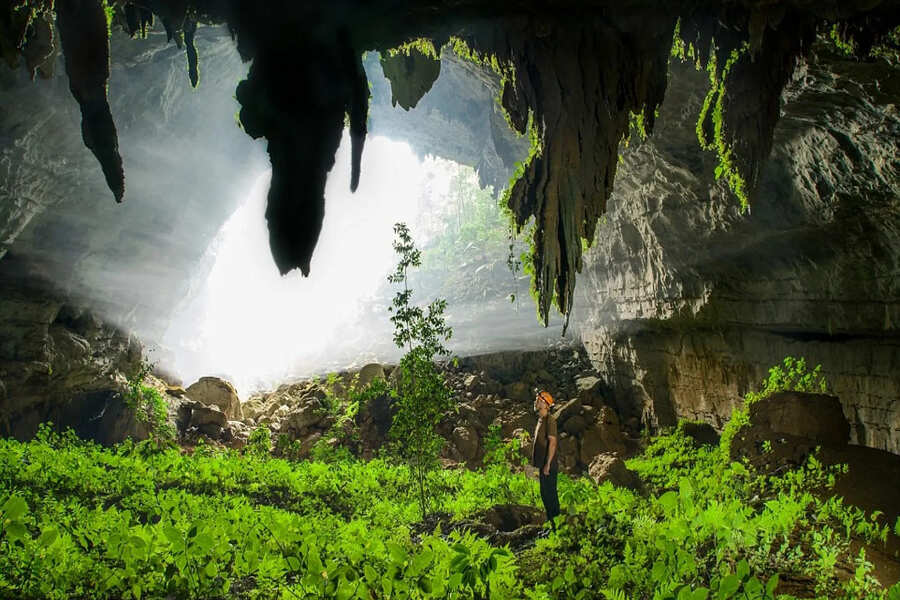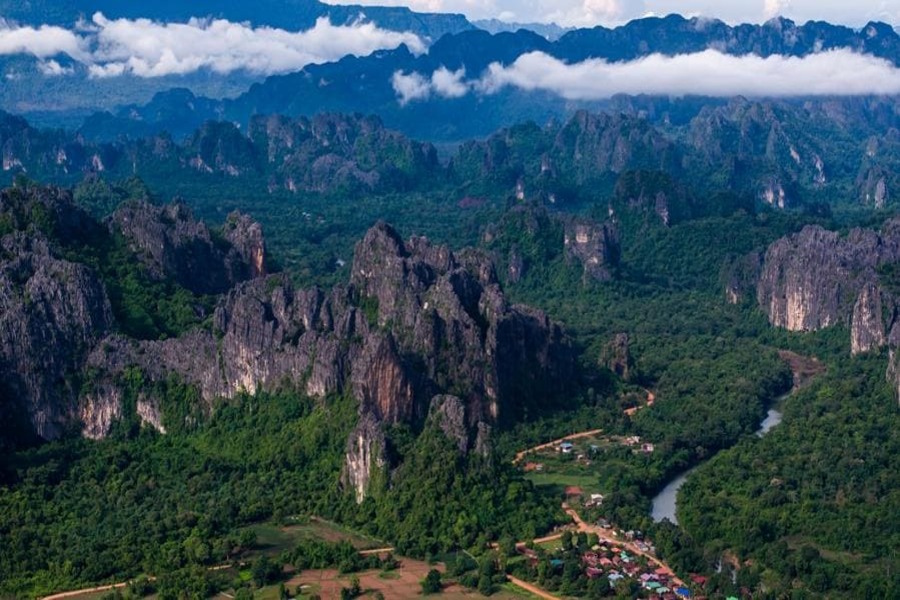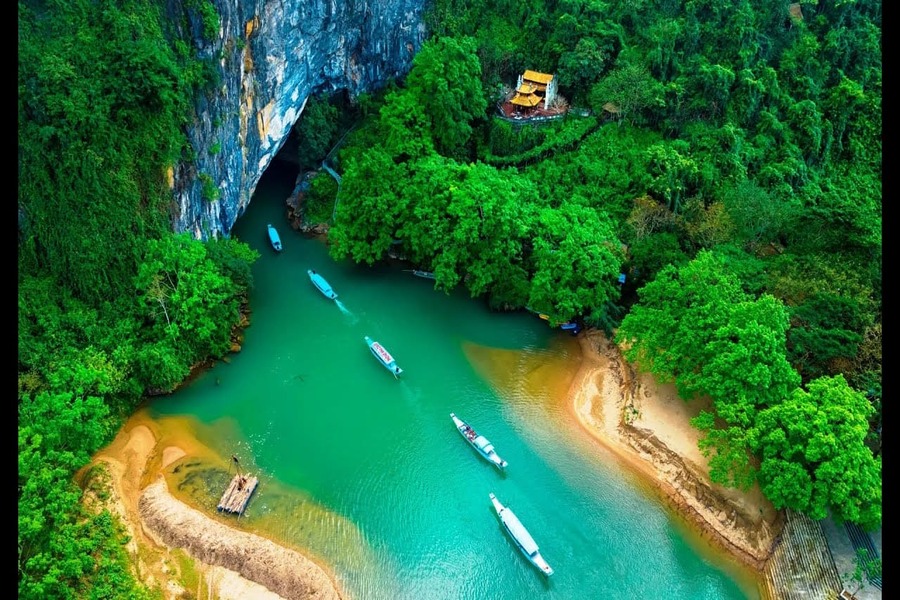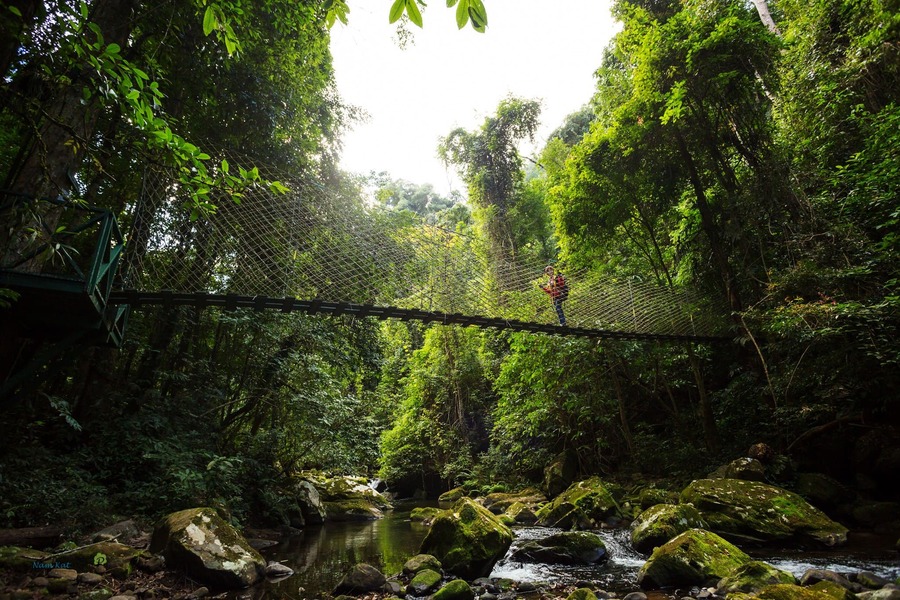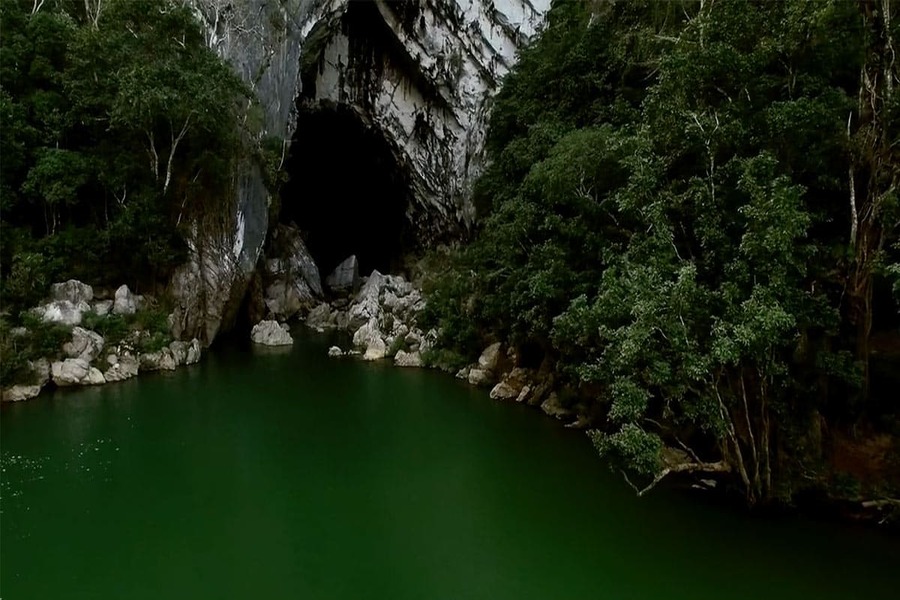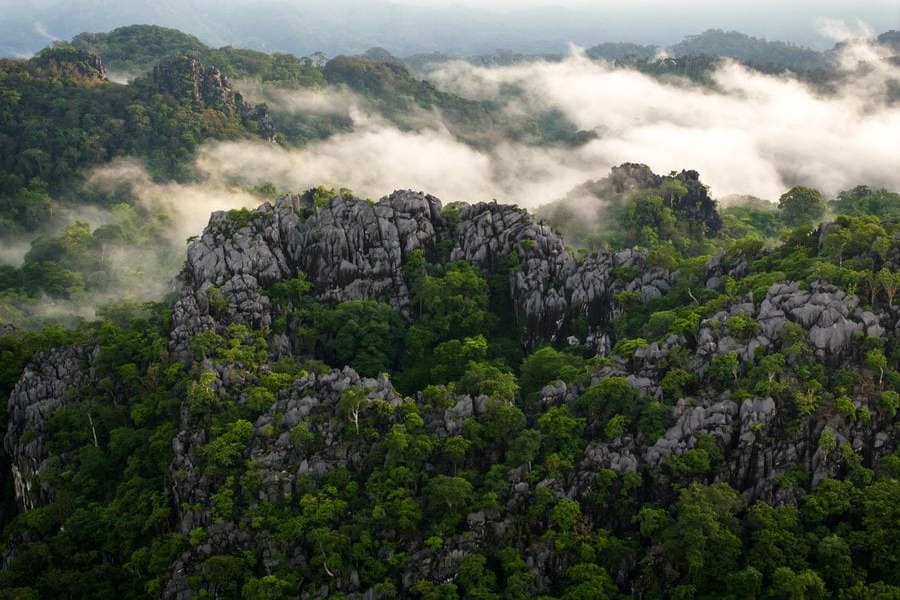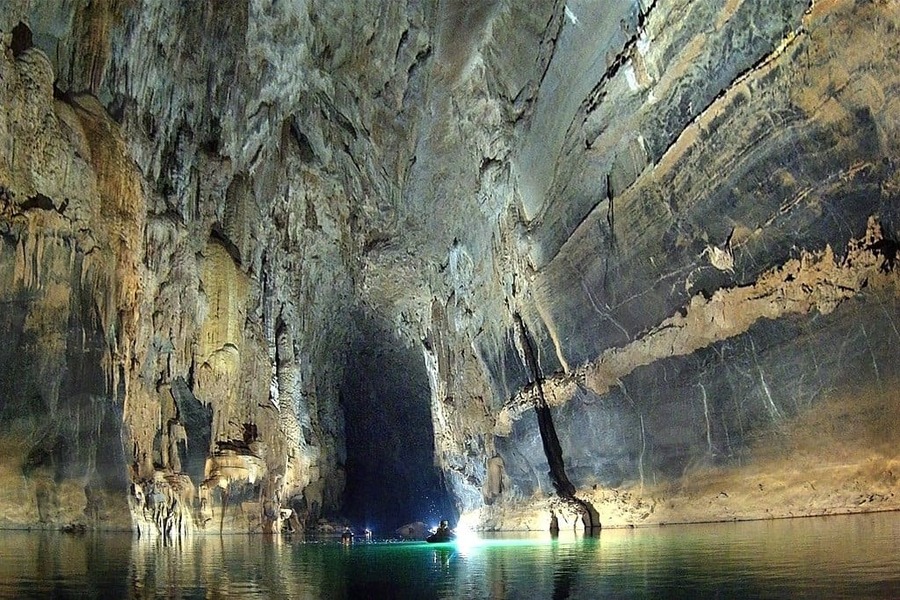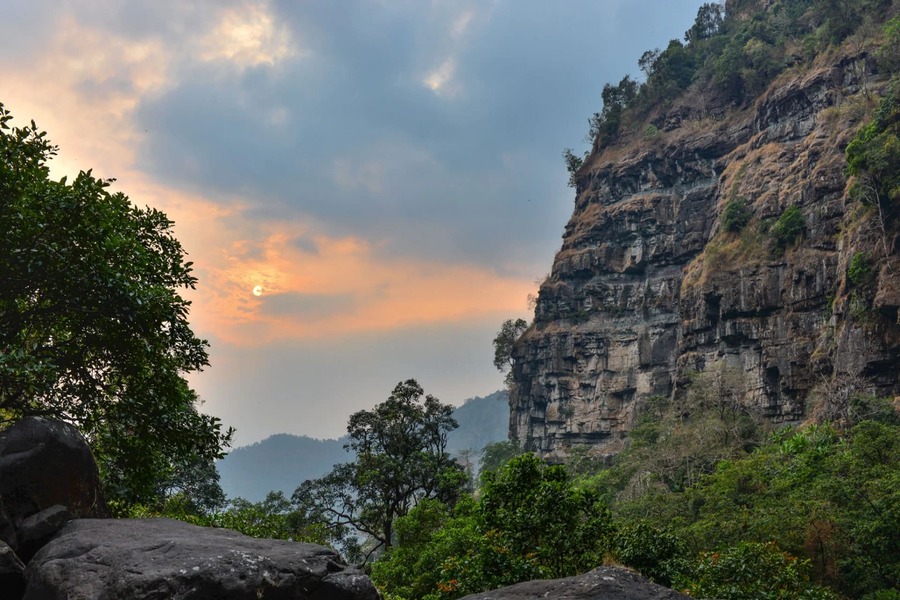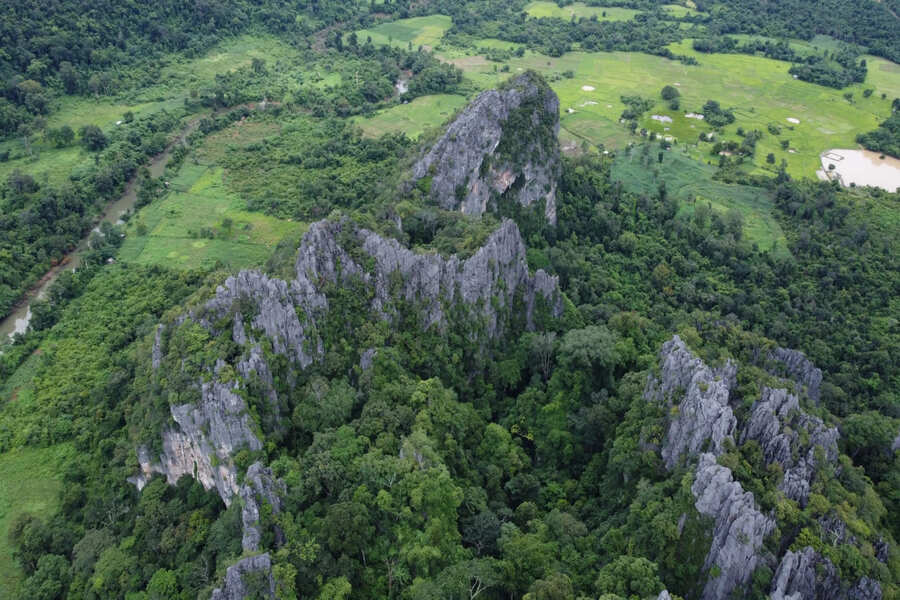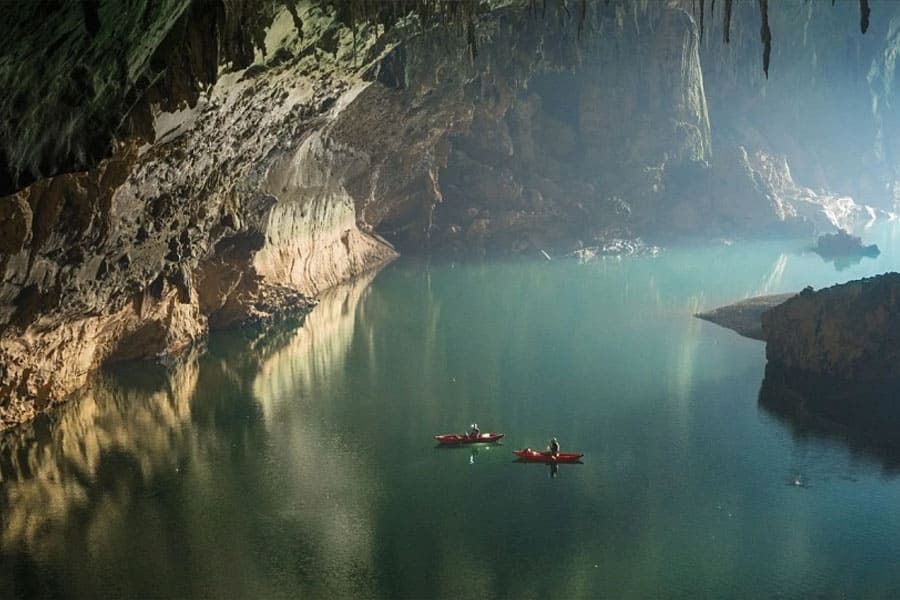Explore Hin Nam No National Park, Laos’ 4th UNESCO World Heritage Site, recognized in 2025. Discover its stunning limestone karst, Xe Bang Fai Cave, vibrant biodiversity, and cultural richness. Plan your eco-adventure with GoLaos.Tours to experience this transboundary marvel alongside Vietnam’s Phong Nha-Ke Bang.
Introduction to Hin Nam No National Park’s UNESCO Recognition
On July 13, 2025, Hin Nam No National Park in Khammouane Province, Laos, was officially inscribed as Laos’ 4th UNESCO World Heritage Site during the 47th Session of the World Heritage Committee in Paris, France. This monumental achievement marks the park as a Transboundary World Heritage Site, seamlessly connecting with Vietnam’s Phong Nha-Ke Bang National Park to form the world’s largest contiguous limestone karst landscape. Spanning 94,121 hectares in southeastern Laos, Hin Nam No National Park showcases unparalleled geological wonders, extraordinary biodiversity, and deep cultural significance. From the majestic Xe Bang Fai Cave to rare species like the Red-Shanked Douc Langur, this park is a must-visit for eco-tourists and nature enthusiasts. In this guide, we explore why Hin Nam No National Park’s UNESCO status makes it a top destination, its unique features, travel tips, and how to plan your Laos tour packages to this destination.
Why Hin Nam No National Park Earned UNESCO World Heritage Status
Hin Nam No National Park’s inscription as a UNESCO World Heritage Site is a testament to its Outstanding Universal Value (OUV), recognized under three UNESCO criteria: geology and geomorphology (viii), ecosystems (ix), and biodiversity (x). Here’s why this park stands out:
Geological Marvels of Hin Nam No
The park’s name, “Hin Nam No,” meaning “mountain crest, spiky as bamboo shoots” in Lao, reflects its dramatic limestone karst formations, shaped over 300 million years. Covering 94,121 hectares, the park features towering cliffs soaring over 300 meters, remote valleys, and 173 documented caverns, including the Xe Bang Fai Cave, one of the world’s largest active underground river systems with passages up to 120 meters tall and 200 meters wide. This geological complexity, formed in the Paleozoic era, creates a pristine landscape that rivals global karst systems.
Unmatched Biodiversity in the Indo-Burma Hotspot
Located within the Indo-Burma biodiversity hotspot, Hin Nam No National Park is a sanctuary for over 1,500 plant species and 536 vertebrate species, many of which are endemic or globally threatened. Notable species include:
Red-Shanked Douc Langur: A vibrant primate unique to the region.
Sunda Pangolin: A critically endangered mammal.
Lao Rock Rat: A “living fossil” discovered in 2005, exclusive to Khammouane Province.
Giant Huntsman Spider: The world’s largest spider, thriving in the park’s caves.
Southern White-Cheeked Gibbon: Among the largest remaining populations in the world.
The park’s diverse habitats—evergreen forests, mixed deciduous forests, and karst-specific ecosystems—support this rich biodiversity, making it a critical conservation area.
Cultural and Historical Significance
Beyond its natural wonders, Hin Nam No National Park is a cultural treasure. Several ethnic minority communities, such as the Brou and Katang, reside within its boundaries, preserving distinct traditions, languages, and lifestyles. These communities maintain a deep connection to the land, practicing sustainable agriculture and spiritual rituals tied to the karst landscape. The park’s cultural heritage complements its natural value, making it a mixed heritage site that celebrates both nature and human history.
Transboundary Collaboration with Phong Nha-Ke Bang
Hin Nam No’s UNESCO inscription as a transboundary site with Vietnam’s Phong Nha-Ke Bang National Park creates a conservation corridor spanning over 217,447 hectares (123,326 hectares in Phong Nha-Ke Bang and 94,121 in Hin Nam No). This partnership, formalized through a 2018 Memorandum of Understanding (MoU) between Laos and Vietnam, enhances cross-border efforts in biodiversity protection, sustainable tourism, and community development. The combined site, officially named Phong Nha-Ke Bang and Hin Nam No National Parks, is the first transboundary natural World Heritage Site in Southeast Asia.
Exploring Hin Nam No National Park - Top Attractions
Hin Nam No National Park offers a wealth of experiences for travelers seeking adventure, nature, and cultural immersion. Here are the must-visit attractions:
Xe Bang Fai Cave: A Subterranean Wonder
The Xe Bang Fai Cave is the park’s crown jewel, renowned as one of the largest active river caves globally. Stretching over 7 kilometers with passages up to 120 meters high, this cave features a subterranean river that flows through dramatic limestone formations. Guided boat tours allow visitors to marvel at stalactites, stalagmites, and underground waterfalls, offering a thrilling adventure for eco-tourists.
Travel Tip: Book cave tours through reputable operators like GoLaos.Tours to ensure safety and expert guidance. Wear sturdy shoes and bring a flashlight for the best experience.
Karst Landscapes and Hiking Trails
The park’s limestone karst landscape is a hiker’s paradise, with trails winding through rugged cliffs, lush forests, and hidden valleys. Popular routes include treks to vantage points offering panoramic views of the Annamite Mountains. The dry season (November-March) is ideal for hiking, as trails are less muddy and offer clear skies.
Travel Tip: Join guided treks to learn about the park’s geology and spot wildlife like gibbons or hornbills. Always hike with a local guide to navigate safely.
Wildlife Spotting and Biodiversity Tours
Hin Nam No’s rich biodiversity makes it a hotspot for wildlife enthusiasts. Guided tours focus on spotting rare species like the Southern White-Cheeked Gibbon or Large-Antlered Muntjac. The park’s cave systems also house unique subterranean species, including blind fish and endemic scorpions.
Travel Tip: Early morning or dusk tours increase chances of spotting wildlife. Bring binoculars and a camera with a zoom lens.
Cultural Encounters with Ethnic Communities
Visiting the park’s ethnic minority villages offers a glimpse into Laos’ cultural diversity. Engage with the Brou or Katang communities through homestays or cultural tours, where you can learn about traditional weaving, farming, and rituals. These interactions foster sustainable tourism and support local livelihoods.
Travel Tip: Respect local customs by dressing modestly and asking permission before photographing. Book cultural tours through GoLaos.Tours for authentic experiences.
Why Visit Hin Nam No National Park in 2025?
Hin Nam No’s new UNESCO status elevates its global profile, making 2025 the perfect year to visit. Here’s why:
Global Recognition: As Laos’ 4th UNESCO World Heritage Site, Hin Nam No joins the ranks of Luang Prabang, Vat Phou, and the Plain of Jars, ensuring increased conservation efforts and international attention.
Eco-Tourism Potential: The park’s UNESCO designation is expected to boost sustainable tourism, generating income for Khammouane’s local communities while preserving its natural and cultural heritage.
Transboundary Adventure: Explore both Hin Nam No and Phong Nha-Ke Bang for a unique cross-border journey, combining Laos’ serene landscapes with Vietnam’s iconic caves.
Untouched Beauty: Unlike more crowded destinations, Hin Nam No offers a pristine, off-the-beaten-path experience for travelers seeking authenticity.
Best Time to Visit Hin Nam No National Park
The dry season (November-March) is the best time to visit Hin Nam No National Park, offering cool, dry weather (15-25°C/59-77°F) ideal for hiking, cave exploration, and wildlife spotting. Clear skies provide stunning views of the karst landscape, and trails are more accessible. The rainy season (June-October) brings lush greenery but makes trekking risky due to muddy trails and potential flooding. Avoid March-April, as the burning season in northern Laos may cause smoky haze, affecting air quality.
Travel Tip: Plan your visit for November or February to avoid peak crowds during December-January. Book accommodations and tours early through GoLaos.Tours.
How to Get to Hin Nam No National Park
Reaching Hin Nam No National Park requires starting from Thakhek, the capital of Khammouane Province, accessible by:
Flight: Fly to Vientiane (Wattay International Airport) or Savannakhet Airport from Bangkok or Hanoi ($100-$300). From there, take a bus or private transfer to Thakhek ($5-$15, 3-5 hours).
Bus: Direct buses from Vientiane or Pakse to Thakhek cost $5-$15 (6-8 hours). Book via 12Go Asia for reliable schedules.
Laos-China Railway: Travel from Vientiane to Thakhek via train ($10-$20, ~3 hours), then a short taxi ride to the park’s entrance.
From Thakhek, the park is a 1-2 hour drive to Boualapha District. Guided tours with GoLaos.Tours include transport, ensuring a hassle-free journey.
Travel Tip: Rent a 4WD vehicle for rural roads, especially in the rainy season. Carry cash (Lao Kip or USD), as ATMs are scarce.
Accommodation Near Hin Nam No National Park
Accommodation options near Hin Nam No are limited but growing due to its UNESCO status:
Budget ($5-15/night): Guesthouses in Thakhek, like Thakhek Travel Lodge, offer basic rooms and local charm.
Mid-Range ($15-50/night): Hotels like Inthira Thakhek provide comfortable stays with Wi-Fi and air conditioning.
Homestays ($10-20/night): Stay with local families in Boualapha District for an authentic cultural experience.
Eco-Lodges ($50-100/night): Emerging eco-lodges near the park offer sustainable stays with stunning views.
Travel Tip: Book accommodations through GoLaos.Tours for tailored packages that include park access and guided tours.
Activities and Tours in Hin Nam No National Park
Hin Nam No offers a range of activities for adventure seekers and culture enthusiasts:
Cave Exploration: Guided tours of Xe Bang Fai Cave ($20-$50) include boat rides and expert commentary on the park’s geology.
Trekking: Multi-day treks ($30-$100) explore karst peaks, forests, and wildlife habitats. Shorter day hikes are available for beginners.
Wildlife Tours: Spot rare species with expert guides ($20-$40). Night safaris may reveal nocturnal creatures like the Giant Huntsman Spider.
Cultural Tours: Visit ethnic villages for weaving workshops or traditional meals ($15-$30).
Photography Tours: Capture the park’s dramatic landscapes and biodiversity with guided photography trips ($50-$100).
Travel Tip: Book with GoLaos.Tours for customized itineraries that combine Hin Nam No with Phong Nha-Ke Bang for a transboundary adventure.
Conservation and Sustainable Tourism in Hin Nam No
Hin Nam No’s UNESCO status underscores its role in global conservation. Managed by Laos’ Ministry of Agriculture and Forestry (MAF), the park is supported by international partners like the German Development Organization (GIZ) and the IUCN Green List program. Key conservation efforts include:
Biodiversity Protection: Safeguarding endangered species like the Large-Antlered Muntjac and endemic plants through anti-poaching patrols.
Sustainable Tourism: Limiting visitor numbers to reduce ecological impact and promoting eco-friendly tours.
Community Involvement: Empowering local ethnic groups through sustainable livelihoods, such as handicraft sales and homestays.
Travel Tip: Support conservation by choosing eco-certified operators and respecting park guidelines, such as staying on marked trails.
Cultural Significance of Hin Nam No National Park
The park’s ethnic communities add a rich cultural layer to its UNESCO designation. The Brou and Katang peoples practice traditional farming and maintain spiritual ties to the karst landscape, believing it to be sacred. Visitors can participate in cultural exchanges, such as:
Weaving Workshops: Learn traditional textile techniques from local artisans ($10-$20).
Village Homestays: Experience daily life with ethnic families, including shared meals and storytelling ($10-$20).
Festivals: Attend local events like the Boun Ok Phansa (October), featuring river lantern ceremonies.
Travel Tip: Engage respectfully with communities by learning basic Lao phrases like “sabaidee” (hello) and supporting local crafts.
Planning Your Visit to Laos' 4th UNESCO World Heritage - Hin Nam No National Park
Visa and Entry Requirements
Most nationalities require a visa for Laos ($35-$50 on arrival or via e-visa). Ensure your passport is valid for 6 months with 2 blank pages. No specific permits are needed for Hin Nam No, but guided tours are mandatory for cave exploration.
Safety Tips
Health: Vaccinate against Hepatitis A, Typhoid, and Japanese Encephalitis. Use DEET-based mosquito repellent, especially in the rainy season.
Safety: The park is safe, but stick to guided tours to avoid unmarked trails with potential unexploded ordnance (UXO) risks.
Weather: Pack lightweight clothing, sturdy hiking boots, and rain gear for wet season visits.
Budgeting for Your Trip
A 5-day mid-range trip to Hin Nam No for one person costs approximately $500-$800:
Transport: $100-$200 (flights to Vientiane, bus to Thakhek).
Accommodation: $100-$200 (mid-range hotels or homestays).
Tours: $100-$250 (cave, trekking, and cultural tours).
Food: $50-$100 (local restaurants and street food).
Miscellaneous: $50-$100 (souvenirs, tips).
Travel Tip: Book a package with GoLaos.Tours to save on logistics and ensure sustainable travel.
Combining Hin Nam No with Other Laos UNESCO Sites in Laos
Extend your Laos adventure by visiting the country’s other UNESCO World Heritage Sites:
Luang Prabang (1995): Explore golden temples and the alms-giving ceremony ($5-$15/day for local transport and entry fees).
Vat Phou, Champasak (2001): Wander ancient Khmer ruins ($3 entry).
Plain of Jars, Xiengkhuang (2019): Discover mysterious megalithic jars ($2 entry).
Travel Tip: Create a 10-day itinerary with GoLaos.Tours to cover all four UNESCO sites, combining cultural and natural wonders.
Hin Nam No National Park’s designation as Laos’ 4th UNESCO World Heritage Site cements its status as a global treasure. Its breathtaking karst landscapes, rich biodiversity, and vibrant cultural heritage make it a must-visit for 2025. Whether you’re exploring the Xe Bang Fai Cave, trekking through pristine forests, or connecting with local communities, Hin Nam No offers an unforgettable eco-adventure. Plan your trip with GoLaos.Tours for expert-guided tours, sustainable travel options, and seamless logistics. Ready to discover Laos’ newest UNESCO gem? Contact us today or share your travel plans in the comments below!

